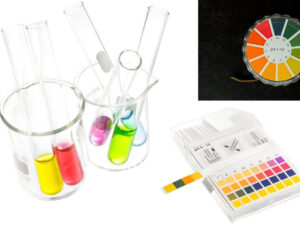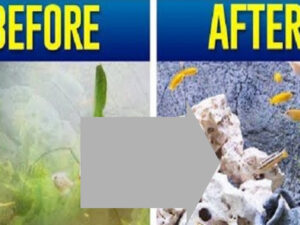Here, we will discuss Aquarium Acronyms, a type of jargon aquarium enthusiasts use to communicate with each other more effectively. This article will provide an overview of some of the most common Aquarium Acronyms hobbyists should know.
Since the aquarium language is so specific, it is fluently spoken and understood among experienced aquarium hobbyists.
Table of Contents
Common Aquarium Acronyms
- Acan Lord: A type of coral that is difficult to keep in an aquarium.
- Acclimation: The process of slowly adapting fish to the water conditions in their new aquarium.
- AEFW: Acro Eating Flatworm. A type of flatworm that is known to eat Acropora corals.
- Aggressive fish: A fish known to be aggressive towards other fish or invertebrates.
- Anemone: A type of marine invertebrate that is often kept in aquariums.
- Aiptasia: A type of marine invertebrate that is considered to be a pest in aquariums.
- Algae: A type of plant that can grow in aquariums.
- Algae Eater: A type of fish that is known to eat algae.
- Ammonia: A chemical that fish and other aquatic organisms produce. Ammonia can be toxic to fish if it builds up to high levels in the water.
- Anaerobic: An environment that does not have oxygen present.
- Anoxic: An area of the tank that contains low oxygen levels.
- Aquascape: Process of arranging and decorating plants and accessories in the aquarium.
- Assertive Fish: Dominant fish that are territorial.
- AIO: All-in-one aquarium.
- Anemone: A type of marine invertebrate that is often kept in aquariums.
- Aiptasia: A type of marine invertebrate that is considered to be a pest in aquariums.
- ATO: A system that automatically replenishes the water in your tank after it evaporates.
- AWC: Aquatic Water Change.
- Base Rock: Uncured live rock not exposed to aquarium water.
- Biofilter: A filter that uses bacteria to remove toxins from the water.
- Bioload: The amount of waste your aquarium’s fish and other inhabitants produce.
- Bloat: A condition that affects fish when they cannot expel air from their stomachs. This can be fatal if not treated.
- Brine shrimp: A type of small shrimp that is often used as fish food.
- Buffer: A substance added to the water to help stabilize the pH.
- BB: A Bare Bottom tank does not contain any substrate.
- Bean: A type of drain.
- Significant 3: The 3 main tests performed on aquarium water to test Ammonia, Nitrite, and Nitrate levels.
- Bio Wheel: A filter that uses a rotating wheel to culture bacteria.
- Blackout: When all the lights in the aquarium are turned off for some time. This is often done to simulate nighttime conditions.
- Bleach: A substance that is used to clean aquariums and equipment. It is important to rinse any bleach residue thoroughly before adding anything back into the tank.
- Blenny: A type of fish that is often kept in aquariums.
- BTA: Anemone that is also known as a Bubble Tip Anemone.
- Bonded Pair: A pair of fish that show breeding potential.
- BPM: Bubbles Per Minute.
- BTU: British Thermal Unit.
- Bubble Nest: A nest made of bubbles containing fish eggs, which are held together by fish saliva.
- Calcium Reactor: An aquarium device that adds calcium to the water.
- Candy Cane: A type of coral that is often kept in aquariums.
- Cartridge: A type of filter media that is inserted into a filter.
- Caulerpa: A type of marine algae that is often kept in aquariums.
- Canister Filter: An external filtration device.
- Chaeto: A type of microalgae.
- Chiller: A device used to cool the water in an aquarium.Clownfish: A type of fish that is often kept in aquariums.
- CPR: Cyclop-eeze, Phytoplankton, Rotifers. Live foods that are often used to feed larval fish and invertebrates
- Community Tank: An aquarium that contains various fish and other aquatic creatures.
- Compatibility: The ability of two or more fish to coexist peacefully in the same tank.
- Coral: A type of marine invertebrate that is often kept in aquariums.
- Coral Reef: A natural ecosystem that is home to a variety of corals.
- Cured Live Rock: Live rock exposed to aquarium water has had time to grow bacteria.
- Cycling: The process of adding fish to an aquarium and allowing the bacteria to build up to establish the nitrogen cycle.
- DIY: Do It Yourself.
- Detritus: Uneaten food and waste accumulating on the aquarium’s bottom.
- DFM: Drip Free Measuring cup. A type of cup that is used to measure water without dripping.
- DIY CO2: A type of carbon dioxide system that is made at home using a variety of different materials.
- DOM: Dissolved Organic Matter.
- Drip Loop: A system that keeps water from dripping onto electrical circuits.
- DT: A Display Tank is used for show or public viewing.
- Eheim: A German company that manufactures aquarium products.
- Elodea: A type of aquatic plant that is often kept in aquariums.Emperor: A type of fish that is often kept in aquariums.
- EO: Essential Oils.
- EOD: End Of Day. The time when the lights in the aquarium are turned off.
- Escape Artist: A fish that is known for being able to jump out of the aquarium or escape from its tank mates.
- Evaporator: A device that is used to remove water from the air.
- Euro brace: A type of aquarium support that prevents the tank from bowing out.
- Exhaust Fan: A device that removes air from the aquarium.
- Fauna: The animal life in an ecosystem.
- FW: Freshwater.
- Filter Feeder: An aquatic creature that feeds on small particles in the water.
- Fin rot: A disease that affects the fins of fish.
- Fishless Cycle: A method of cycling an aquarium without using fish.
- FOWLR: Fish Only With Live Rock. An aquarium that contains fish with live rock but no corals.
- Freshwater: Water that does not contain salt.
- Fish Stock Limit: The number of fish that can be kept in an aquarium without overstocking.
- Filter: A device that removes debris and waste from the water.
- Flatworm: A type of marine invertebrate that is often kept in aquariums.
- Flow: The movement of water in an aquarium.
- Fluval: A company that manufactures aquarium products.
- Foraminifera: A type of marine algae that is often kept in aquariums.
- Fry: The young of a fish.
- GH: General Hardness.
- GPH: Gallons Per Hour.
- Glass Top: A type of aquarium cover that is made of glass.
- Gravel: The substrate used to fill the bottom of the aquarium.
- GPD: Gallon Per Day.
- HA: Hair Algae.
- Hydrometer: A device used to measure a fluid’s density.
- Hang-on-back Filter: A type of filter that hangs on the back of the aquarium.
- HOB: Hang On Back.
- Herbivore: An animal that feeds on plants.
- Hydrophone: A type of microphone that is used to record underwater sounds.
- Ich: A disease that affects fish.
- Invertebrate: An animal without a backbone.
- Internal Filter: Filters that work from inside the tank.
- LED: Light Emitting Diodes.
- Light Meter: Measures light intensity.
- Live Barer: A type of fish used to cycle an aquarium.
- Live Rock: Rock taken from the ocean and placed in an aquarium.
- Mechanical Filtration: Removing debris from the water using a filter.
- Microalgae: Small algae that often grow in aquariums.
- Moisture Trap: A device that removes moisture from the air.
- Nitrate: A type of pollution that can build up in an aquarium.
- Nitrogen Cycle: The process by which ammonia is turned into nitrate.
- Nitrite: A poisonous substance that is produced when ammonia is broken down.
- Omnivore: An animal that feeds on both plants and animals.
- OC: Open Channel – this is a tube that has both water and air flowing through it.
- pH: Potential of Hydrogen. A measure of the acidity or alkalinity of a solution.
- Photosynthesis: The process by which plants use light to make food.
- PO4: Phosphate.
- Powerhead: A device that
- Plankton: Small aquatic creatures that are often used as food for fish.
- pH Meter: A device used to measure a solution’s acidity or alkalinity.
- Predator: An animal that feeds on other animals.
- PPM: Parts Per Million.
- Powerhead: A device used to create water flow in an aquarium.
- Protein Skimmer: A device that removes proteins from the water.
- QT: Quarantine Tank.
- Quarantine Tank: An aquarium that is used to quarantine new fish.RO: Reverse Osmosis.
- Refugium Tank: An aquarium that is used to grow live food.
- Reverse Osmosis: A process by which water is filtered through a semi-permeable membrane.
- RP: Return Pump.
- SAL: Salinity.
- Shy Fish: Fish that hide away from others.
- Siphon: A tube that is used to remove water from an aquarium.
- Skimmer: A device that is used to remove debris from the water.
- Snail: A type of aquatic creature that is often kept in aquariums.
- Sump Tank: An aquarium that stores water for an aquarium.
- Substrate: The material used to fill the bottom of the aquarium.
- Slime Coat: A slimy substance that protects the fish scales when swimming.
- Specific Gravity: The ratio of the density of a substance to the density of water.
- SW: Saltwater.
- TDS: Total Dissolved Solids.
- TOTM: Tank Of The Month.
- TTM: Tank Transfer Method. A method of isolating fish to prevent or cure disease.
- Turn Over: How fast water leaves and enters the tank.
- UGF: Under-Gravel Filter.
- UV: Ultraviolet.
- UV Sterilizer: A device used to kill microorganisms with UV light.
- V: Volt.
- VHO: Very High Output.
- Water Change: The process of removing and replacing water from the aquarium with fresh water.
- Wet/Dry Filter: A filter that uses air and water to filter the water.
- WH: White hair algae.
- W/O: Water Only.
- WQ: Water Quality.
- X: A white, powdery substance that removes phosphate from the water.
- Y: Yellow Algae.
- YTD: Year To Date.
- Zooplankton: Small aquatic creatures that are often used as food for fish.
Check How To Cure Fish Fungus (Aquarium Fish) Ultimate Treatment & Medication
Types Of Tanks
There are four main types of tanks: freshwater, saltwater, brackish, and reef. Each one has its own unique set of challenges and rewards.
Please check Tomini Tang Fish Care Guide: Appearance, Breeding & All
Let us discuss these tanks one by one:
Freshwater Tank
The most common type of aquarium is the freshwater tank. These tanks can be home to various fish, plants, and other creatures.
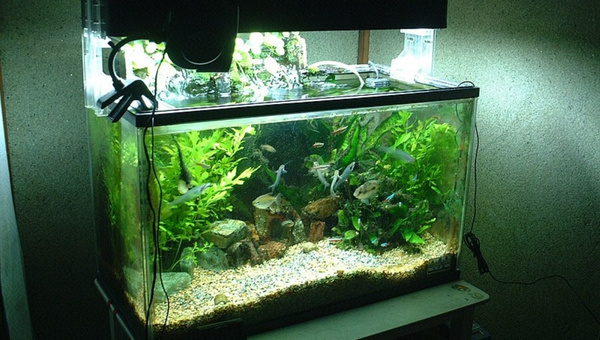
Maintaining a delicate water chemistry balance is critical to a successful freshwater tank. This means regular testing and careful monitoring of the water parameters.
You may also check Bellus Angelfish Care: Appearance, Size, Lifespan, Diet & All
Saltwater Tank
Saltwater tanks are slightly more challenging to set up and maintain than freshwater tanks. Salt water is much more corrosive than freshwater and can damage delicate aquarium equipment.
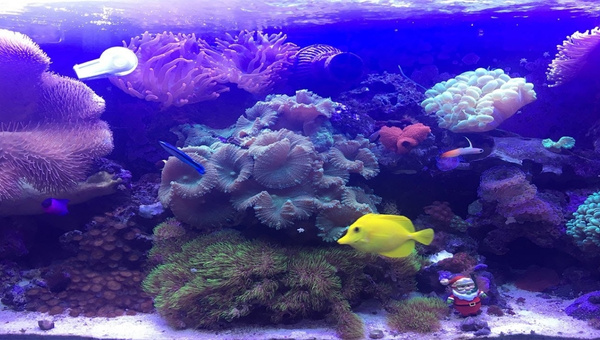
In addition, saltwater fish are often more sensitive to changes in water chemistry than freshwater fish.
As such, it is essential to carefully research the needs of saltwater fish before setting up a saltwater tank.
Also, check Sand Sifting Starfish 101: Care, Appearance, Lifespan, Diet & All
Brackish Tank
Brackish tanks are a mix between freshwater and saltwater tanks. The water in these tanks is less corrosive than salt water but is still more challenging to maintain than freshwater.
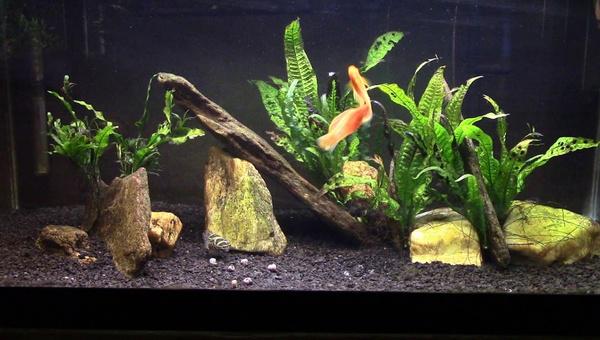
Brackish tanks are home to various fish, plants, and other creatures. Maintaining a delicate water chemistry balance is critical to a successful brackish tank. This means regular testing and careful monitoring of the water parameters.
You may also check Cherry Barb Fish: Care, Tankmates, Lifespan, Breeding & All
Reef Tank
Reef tanks are the most challenging type of aquarium to set up and maintain. This is because reef tanks contain delicate corals and other invertebrates sensitive to changes in water chemistry.
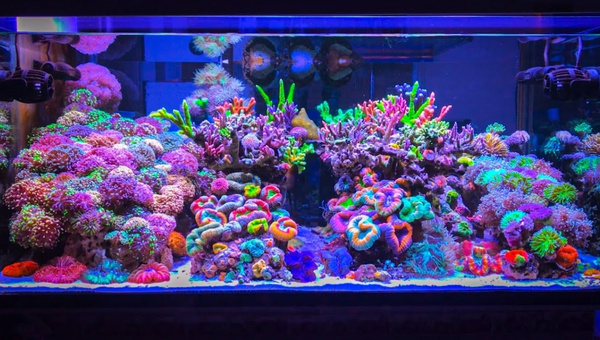
In addition, reef tanks require special lighting and filtration systems to maintain the ecosystem’s delicate balance. As such, it is essential to carefully research the needs of a reef tank before setting up a reef tank.
You may also check Paradise Fish Care Guide, Appearance, Food, Size & All
Differences Between The Tank
Freshwater and A Saltwater Tank
Freshwater tanks are typically easier to care for than saltwater tanks. They also tend to be less expensive and require less equipment. On the other hand, saltwater tanks can be more challenging to maintain but often provide a more natural-looking environment for your fish.
Check Ryukin Goldfish Care, Lifespan, Behaviour, Diet & All
Brackish Water And A Reef Tank
Brackish tanks mix fresh and saltwater and usually contain fish that can tolerate both. Reef tanks are entirely saltwater and typically contain coral and other invertebrates. They require more care than other tanks but can be very rewarding for the hobbyist.
Also, check Killifish Ultimate Care Guide, Size, Diet, Breeding, Tankmates & All
Summary
Acronyms and slang words are essential for every aquarium hobbyist to know. These terms can help you better understand the hobby and ensure your tank is thriving and healthy.
There are four main types of tanks: freshwater, saltwater, brackish, and reef. Each one has its own unique set of challenges and rewards. Freshwater tanks are typically easier to care for than saltwater tanks. They also tend to be less expensive and require less equipment.
Also, check Betta Fish 101: Diet, Lifespan, Size, Care Guide & All
On the other hand, saltwater tanks can be more challenging to maintain but often provide a more natural-looking environment for your fish.
Brackish tanks mix fresh and saltwater and usually contain fish that can tolerate both.
Reef tanks are entirely saltwater and typically contain coral and other invertebrates. They require more care than other tanks but can be very rewarding for the hobbyist.
You may also check Black Ghost Knife Fish 101: Best Detailed Guide & More
Also, don’t forget to regularly test and monitor your water parameters to ensure a healthy aquarium environment for your fish. A delicate balance of water chemistry is critical to a thriving aquarium.
Therefore, it is essential to carefully research the needs of your fish before setting up an aquarium. With patience and dedication, you can create a beautiful and vibrant underwater world for your fish to enjoy and thrive in.


